Oyler Mine, Washington Co., Utah
Last Updated: 3rd Dec 2008By Daniel Russell
Preliminary Notes On The History Of The
Oyler Mine
Capitol Reef National Park
Fruita, Wayne County, Utah
Oyler Mine
Capitol Reef National Park
Fruita, Wayne County, Utah
by Daniel E Russell
The Oyler Mine was a uranium mine located 2 miles south of the town of Fruita in Washington County, Utah, in what is today Capitol Reef National Park. The claims exploited secondary uranium minerals in the sedimentary Chinle formation.
Originally called the “Nightingale Claim” the earliest claim was filed in late 1901 by Thomas Pritchett and H J McClellan. A competing claim, called the “Little Jonnie”, was made in 1902 by Willard Pace and James and Allen Russell, who were hoping to find gold, silver and copper on the site (while minor amounts of copper were present in the deposit, silver and gold were largely absent).
On 1 January 1904 the site was again claimed, this time by John C “Jack” Sumner and Thomas E Nixon. Sumner had served as a key member of John Wesley Powell's expedition down the Grand Canyon in 1869, and had discovered the gold-bearing vein that became the Bromide Mine in the Bromide Basin of Utah.
Uranium, per se, had only limited value; its industrial utility was mostly limited to use as a colorant in glass and ceramic glazes, with lesser quantities used as an analytical reagent and to tone photographs a pleasing red-brown. Of greater interest were the traces of radium that occurred as impurities in the uranium minerals. At the time, radium was one of the most valuable substances on Earth, worth about $80,000 per gram.
During their tenure, Sumner and Nixon excavated two adits into the sandstone mountainside, each about 108 feet long and measuring 6½ by 8 feet. The adits were spaced about 14 feet apart, and are located on the face of a cliff at the mouth of Grand Wash Canyon. They also began two stone walled structures, intended to serve as a cabin and storage shed, but which were never completed. The stone walls have been preserved. Sumner died circa 1907, and Nixon maintained sole ownership until 1911 when he sold a part of the mine to Jacob Young and T J Jukes. Failure to perform the required annual development work caused the claim to lapse, and in January 1913 it was re-located by Michael V Oyler as the Oyler Mine. Oyler does not appear to have been any more successful than previous owners at finding payable uranium/radium on the site. Following his efforts, numerous (and sometimes conflicting) claims have been made to the property.
In 1937, President Franklin D Roosevelt signed a proclaiming creating Capitol Reef National Monument, consisting of 37,711 acres (the site would become a National park in 1971). In 1942, the National Park Service sought to force out all mining claims and operations within the site's boundaries, and declared the claim to the Oyler Mine to be null and void (apparently using the legal principal of “divine right of kings”). The issue see-sawed through the courts for a decade until the Atomic Energy Commission (AEC) interceded, making the case that uranium was critical to the nation's defense. AEC Commissioner Gordon Dean wrote to the Secretary of the Interior Oscar Chapman, "The grade of uranium-bearing material in the vicinity of the 'Oiler Tunnel' is such as to cause us to believe, in light of our experience with development of similar deposits elsewhere, that appropriate work in this area might disclose an important uranium deposit. In addition we believe thorough prospecting and exploration of the favorable formations in this area may disclose similar deposits." (Quoted in Frye, 1998). A special use permit was granted for uranium mining in the monument's borders. As “uranium-mania” unleashed an army of amateur prospectors armed with geiger counters into America's deserts, the National Park Service estimated that roughly 10,000 claims were filed within the current bounds of Capitol Reef National Park. (The attached photos are from the United States Geological Survey's files and date from this particular era.) The special use permit expired in 1956 which, coupled with a drop in the price of uranium and the development of larger uranium deposits internal to the United States, ended the Oyler Mine.
No records were preserved to document ore production at the Oyler Mine. While the Oyler is believed to have been one of the most productive of all the mines and claims within the Capitol Reef area, its production seems to have been small. Notwithstanding the legal defense offered by the owners, the lack of development on the site which can be dated to the era 1937 to 1956 indicate that the Oyler Mine was not one of the stellar uranium producers of the US Southwest.
The archaeological remains of the Oyler Mine are preserved today as part of the Capitol Reef National Park. The entrances to the adits excavated by Sumner and Nixon are today closed off by open grate gates, enabling the regional bat population to access the interior of the adits for roosting.
Bibliography
Frye, Bradford J
From Barrier To Crossroads: An Administrative History Of Capitol Reef National Park, Utah
Volume II Cultural Resources Selections, Intermountain Region, National Park Service, Denver, Colorado No. 12 (1998)
Available on-line at: http://www.nps.gov/archive/care/resources/admin%20history/adhi.htm
National Register of Historic Places
“Oyler Mine” Nomination Form
National Park Service, United States Department of the Interior
Certified 5 Aug 1999
Article has been viewed at least 14988 times.




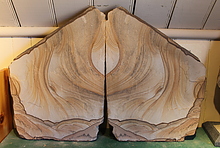
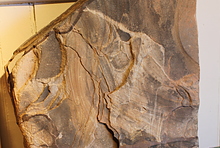
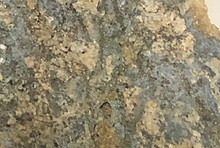


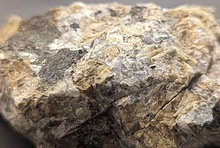
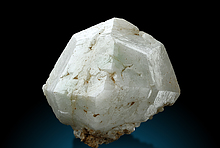
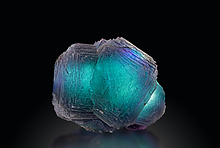






Original caption reads “R.Q. Lewis at portal, Oyler mine, Capitol Reef”